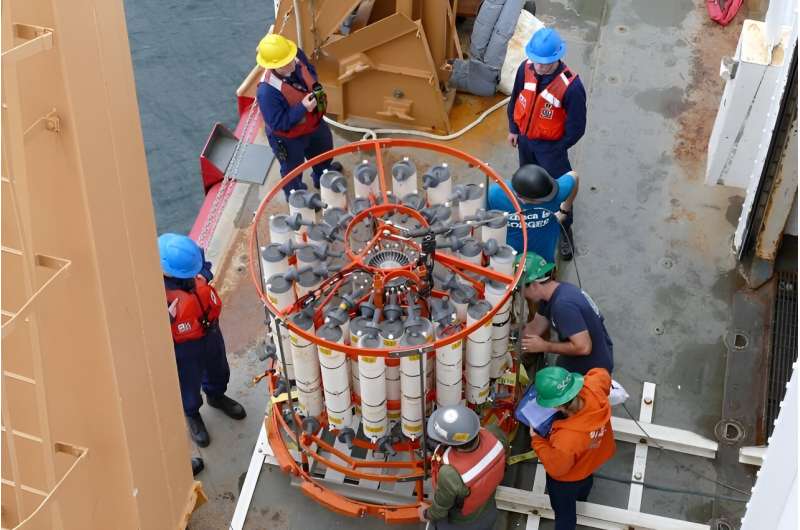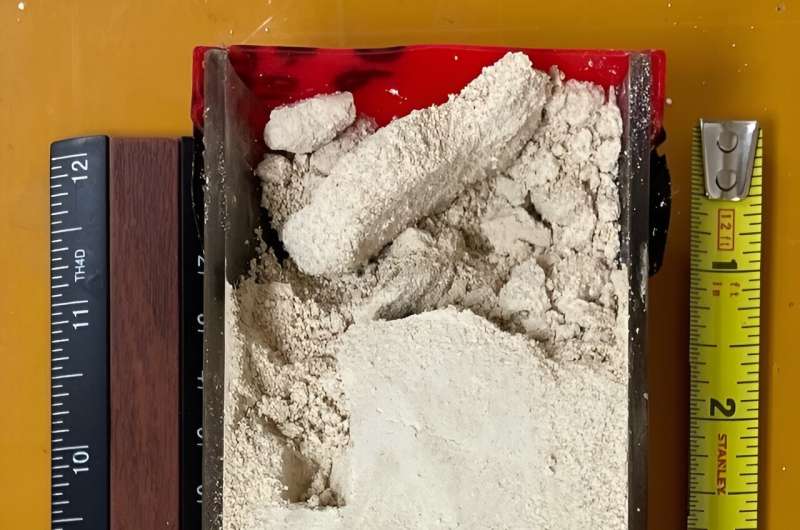This article has been reviewed according to Science X's editorial process and policies. Editors have highlighted the following attributes while ensuring the content's credibility:
fact-checked
peer-reviewed publication
trusted source
proofread
Research reveal large swings in past ocean oxygen

As the climate warms, there is major concern that Earth's ocean will lose oxygen. A study published in Geophysical Research Letters by oceanographers at the University of Hawai'i at Mānoa revealed that locked in ancient deep-sea sediments is evidence for oxygen loss in the world's ocean during past glacial periods, indicating that widespread oxygen loss with current climate change may not be permanent.
Scientists first measured oxygen in the oceans in the 1960s. Since then, they have observed decreasing levels in the mid-depths of the ocean—a phenomenon that can be explained in part by the fact that warmer waters hold less oxygen. Less oxygen in the water can lead to habitat loss for fish and other marine species that need oxygen to breathe. If the naturally-occurring low-oxygen regions in the Eastern Pacific expand in a warmer climate, Pacific Island fisheries could be significantly impacted.
Cobalt holds the clues in deep-sea sediments
"Ultimately, it would be helpful if we knew how low-oxygen regions of the ocean changed with past climate changes," said Nick Hawco, lead author of the study and assistant professor of oceanography, in the UH Mānoa School of Ocean and Earth Science and Technology (SOEST).
"However, the problem is that oxygen is a gas, so we don't have any reservoirs of past oceans to test the oxygen content. Our new study builds off of prior work where we discovered that low oxygen water bodies in the Pacific are enriched in the metal cobalt."
"One of the biggest sources of cobalt to the oceans is where oxygen deficient zones intersect with the continental shelf, leach cobalt from the shelf, and then transport it across the ocean in a plume of low oxygen water," said Rhea Foreman, study co-author and oceanography researcher in SOEST. "The cobalt is subsequently incorporated into minerals that are deposited onto the seafloor and preserved in the sedimentary record."

The researchers analyzed seafloor sediments from the past 145,000 years, a timeframe that includes the last major ice age. They found more cobalt in sediments from the past ice ages, compared to more recent sediments.
"This means that there was a build up of cobalt in the Pacific during the last ice age," said Hawco. "Because high cobalt is a proxy, or a stand-in, for low oxygen, this indicates there were probably larger regions of low oxygen waters in the Pacific during that time."
Time to adapt
One suggested explanation for low-oxygen waters being more common in cold climates is the change in ocean circulation that accompanies climate change. Today, complex currents flowing from west to east help add oxygen to the mid-depth waters of the tropical Pacific.
"If these currents weaken, the oxygen in the Pacific would decline," said Hawco. "This is what we think happened during the last glacial period. But we don't know how strongly—or how fast—these currents will respond to ocean warming."
This could mean that fish and other species are able to adapt to changing oxygen as long as these changes are slow enough, as appears to have happened in the past.
"We need to reduce emissions as soon as possible to buy time for these ecosystems to adapt to the climate change we are already locked into based on the last 150 years of carbon emissions," added Hawco.
More information: Nicholas J. Hawco et al, Expansion of Ocean Anoxia During Glacial Periods Recorded in the Cobalt Flux to Pelagic Sediments, Geophysical Research Letters (2023). DOI: 10.1029/2023GL105135
Journal information: Geophysical Research Letters
Provided by University of Hawaii at Manoa





















